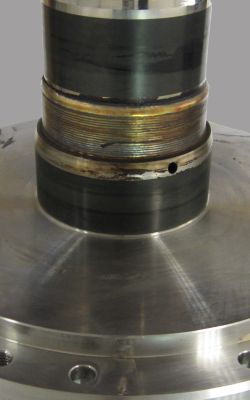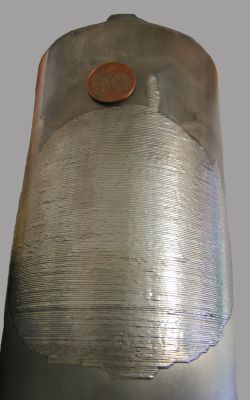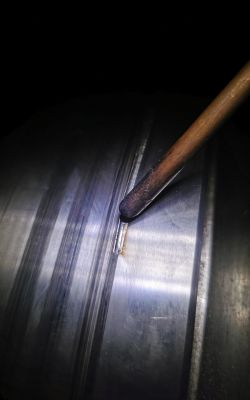Laser Cladding
deposition welding
Laser cladding / deposition welding is a laser-based coating process and offers a first-class alternative to the long-established surface finishing processes.
By applying an additional material by laser process, the physical properties of the component surfaces are positively influenced.
The laser deposition of the individual layers is adapted to the individual requirements:
- Wear protection – improved mechanical stress on the surfaces.
- Corrosion protection – we apply a corrosion-resistant material to the surface you require.
- Higher conductivity – by applying copper, silver, aluminum or gold, we improve the conductivity of your component for you.
What is cladding?
Laser cladding (also: laser deposition welding) is a surface refinement process to create an improved surface structure or surface hardness.
Work examples laser cladding / deposition welding:
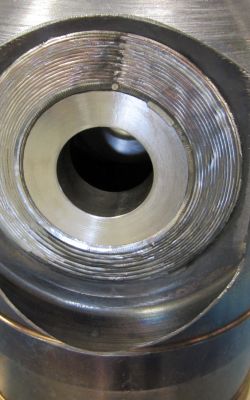

Stellite welding
Valve body into which a stellite seat (Ø 11 cm, depth 3 cm) was circumferentially welded.
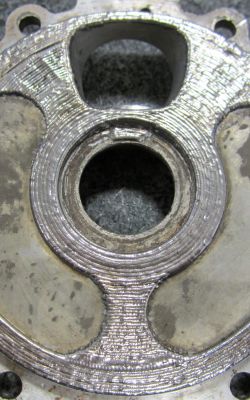

Wear of housing cover
Welding of a new layer of 1.2 mm.
Additional material was adapted to base material.
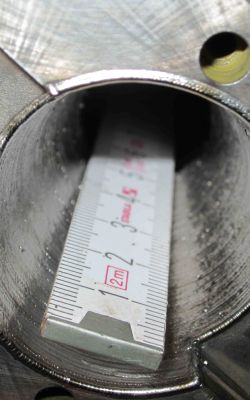

Lathe spindle
Internal conical seat was damaged due to overstressing of the machine. Recoated by laser cladding throughout.
The advantages of laser cladding / deposition welding:
We coat with different filler alloys that are individually adapted to the base material.
We work robot-controlled, which makes the results very reproducible and therefore applicable to serial parts.
The layer-by-layer material application leads to improved mechanical stress and counteracts abrasion. As a result, the components have a longer service life.
We coat your components with corrosion-resistant alloys that can be customized.
We coat with silver, gold, aluminum or copper.
We achieve great homogeneity in bonding. There is hardly any contamination, but smooth surfaces. As a result, there is little or no rework.
Laser cladding is a highly precise coating process. We work with a very low material application, which results in production-related advantages. For example, weight can be saved by reducing the coating material. And this is achieved while maintaining the same quality.
Fields of application
for laser cladding
We recommend laser cladding for almost all areas of application in which the highest precision and consistent quality are required.
Whether prototype construction, new part production, series production or repair services – due to its variability, laser cladding enables an innumerable sum of solutions to create metallic surfaces.
Individually controlled, they improve, for example, the sliding properties, strength or abrasion resistance of the processed component.
Laser cladding
from micro to macro
With laser cladding, we can coat material thicknesses from 0.20 mm. The bandwidth ranges from components weighing several tons (turbine or mechanical engineering) to components weighing just a few grams (measurement and control technology / medical technology).
Irrespective of the respective component dimensions and thicknesses, it is also possible to join material pairings with very different properties:
For example, a bearing bronze can be applied directly to the steel base body with 100% bonding.
Application areas of laser cladding / deposition welding:
Mechanical engineering
For example:
- Bronze coating of clamping rings (16CrMo4).
- Coating of shaft seats.
Gas / steam turbine construction
For example:
- Coating of part joints.
- Coating of blades.
Energy industry
For example:
- Coating of aluminum blocks with a silver layer of 1 mm for better conductivity.
